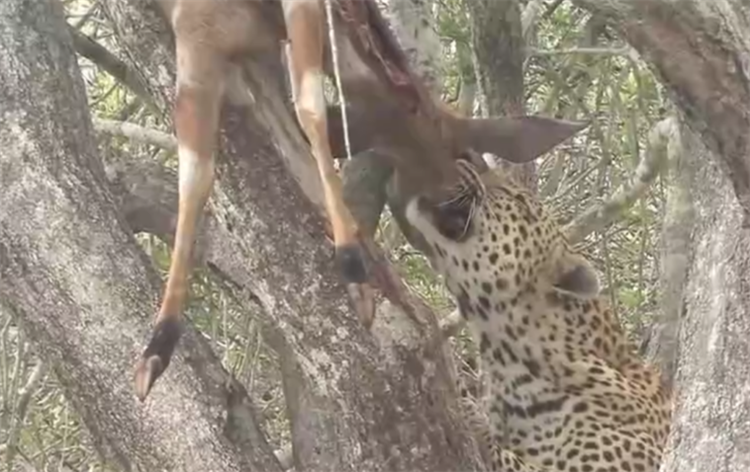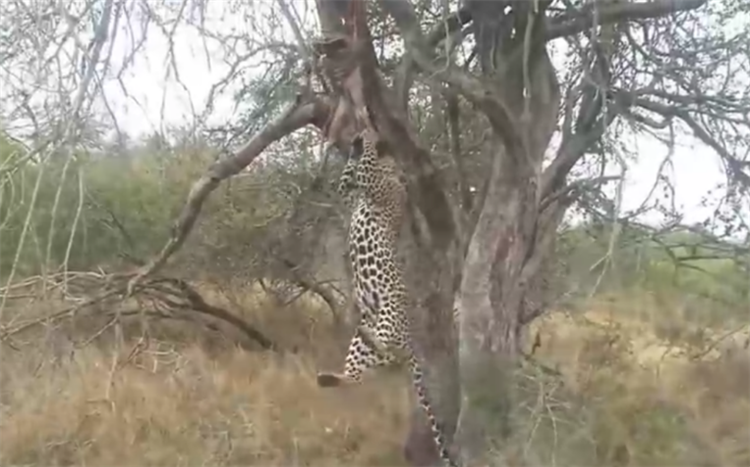During his tour of Kruger Park, Roho Ya Chui witnessed a rare sight. The guest did not forget to capture this memorable moment and share it on social networks.
In the video, the jaguar is suspended from a tree branch as it tries to cling to the carcass of its prey. Leopards often have the habit of bringing their spoils to a tall tree to preserve and eat there. They do this to keep the fruits of their labor safe, preventing other species such as hyenas and wild dogs from approaching and stealing their prey.

The jaguar will continue to return to its natural “storehouse” on the tall branches until the prey has been eaten by them. However, in the video that Roho Ya Chui shared, it is not clear why the jaguar wants to bring the bait to the ground.
Ironically, the deer’s body was stuck on the tree branch and could not be moved, the leopard because trying to drag the body to the ground was suspended on the branch.

The next morning, the tour group returned to check, only a little deer meat remained on the branch, the leopard and most of the carcass was no longer there.

The jaguar (scientific name: Panthera onca) is one of the five largest species of the Cat family alongside the lion, tiger, leopard and snow leopard, and the only species of these five species native to the area. Americas. The jaguar’s current range extends from the southwestern United States and Mexico in North America, through much of Central America, and south to Paraguay and northern Argentina in South America. Although there are distinct individuals now living in the western United States, this species has largely been extinct from the United States since the early 20th century. It is listed as Vulnerable on the IUCN Red List; and their numbers are decreasing. Threats include habitat loss and fragmentation. The jaguar is also the largest cat in the Americas, and the third largest in the Cat family (after tigers and lions), they have the strongest bite force and method of attacking the head. nucleus instead of the throat.
